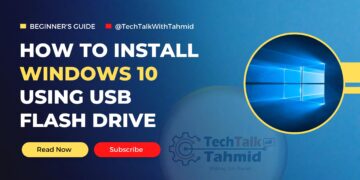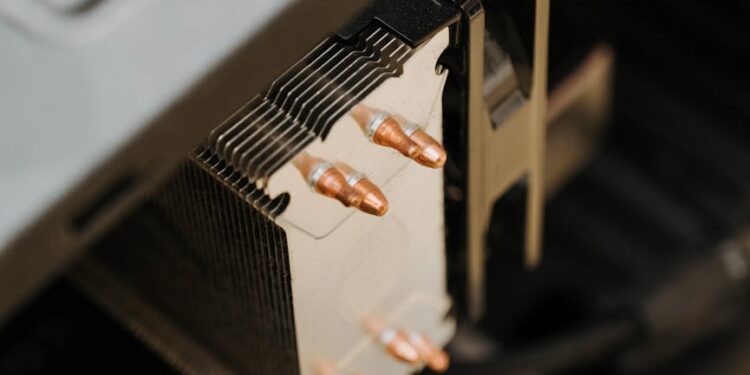The dream of establishing a personal lab, a dedicated space for experimentation, learning, and hosting projects, often seems out of reach for students and hobbyists in Bangladesh. The perception of high costs associated with server hardware, networking equipment, and specialized software can be a significant barrier. However, building a powerful and functional home server doesn’t require a substantial budget or advanced expertise. This article aims to demystify the process, demonstrating how resourceful thinking, a bit of DIY spirit, and leveraging readily available, affordable components can transform your aspirations into a tangible home lab. We will explore practical strategies, hardware recommendations, and essential software tools to help you construct your dream lab without breaking the bank, right here in Bangladesh.
Laying the foundation: defining your lab’s purpose and budget
Before diving into hardware purchases, the first crucial step is to define the primary purpose of your dream lab. What do you want to achieve with it? Are you aiming to host a personal website, create a media streaming server for your family, experiment with home automation, or set up a development environment for coding projects? Clearly outlining your goals will dictate the hardware specifications and software stack you’ll need, preventing unnecessary expenditure. For instance, a simple file server requires less processing power than a server running multiple virtual machines for a full-stack development environment.
Once your objectives are clear, establishing a realistic budget is paramount. In Bangladesh, affordability often means looking beyond brand-new, high-end components. The local market, including places like IDB Bhaban in Dhaka or local computer repair shops, can be a treasure trove for used but perfectly functional parts. Online marketplaces like Bikroy.com or Facebook groups dedicated to computer hardware sales also offer excellent opportunities for budget-friendly acquisitions. Consider the long-term running costs as well, particularly power consumption, which can add up for always-on servers. Prioritizing energy-efficient components, even if slightly more expensive upfront, can save money in the long run.
Hardware heroes: unlocking affordable server potential
The core of your affordable dream lab will be its hardware. Forget expensive server racks; many common devices can be repurposed effectively. Here are some excellent budget-friendly options:
- Repurposed old PCs or laptops: Your forgotten desktop from college or a retired family laptop can be a powerful server. These often come with CPUs, RAM, and storage that are more than sufficient for many home lab tasks. Laptops, in particular, offer built-in UPS functionality thanks to their batteries. Look for models with at least 4GB of RAM and a dual-core processor for a decent start.
- Single board computers (SBCs): Devices like the Raspberry Pi are incredibly popular for a reason. They are tiny, consume minimal power, and are surprisingly versatile. While a Raspberry Pi 4 can handle a range of projects from web servers to home automation, other SBCs like Orange Pi or LattePanda might offer different performance points or I/O options at competitive prices. Their low power draw makes them ideal for always-on services.
- Mini PCs and thin clients: These compact, low-power devices, often found as refurbished units, can be perfect server candidates. They are designed for continuous operation and often come with respectable CPUs and RAM for their size, capable of running multiple services quietly.
When sourcing components in Bangladesh, always check the condition of used items thoroughly. Test RAM modules, hard drives, and power supplies if possible. Consider starting small and upgrading components like RAM or adding more storage as your needs grow.
Software savvy: the open-source advantage
Once you have your hardware, the software stack transforms it into a functional server. This is where the power of open-source software becomes incredibly valuable for budget-conscious builders. Operating systems like Linux distributions are free, robust, and offer immense flexibility:
- Operating systems: Ubuntu Server, Debian, and Fedora Server are excellent choices. They are lightweight, secure, and have vast community support for troubleshooting. Ubuntu Server is particularly user-friendly for beginners.
- Virtualization and containerization: To maximize hardware utilization, consider virtualization platforms like Proxmox VE or the free tier of VMware ESXi. These allow you to run multiple virtual machines on a single physical server, effectively hosting various services independently. For more lightweight application deployment, Docker is a game-changer. It enables you to package applications and their dependencies into portable containers, ensuring consistent environments and easy deployment.
Here’s a table illustrating some common server projects and suitable open-source software:
| Project Type | Primary Software | Description |
|---|---|---|
| Personal Website/Blog | Apache HTTP Server, Nginx, WordPress | Host your own blog or static website directly. |
| Media Server | Plex, Jellyfin (open-source) | Stream movies, TV shows, and music to devices on your network. |
| File Server / Cloud Storage | Samba, Nextcloud | Share files across your local network or create a personal cloud. |
| Home Automation Hub | Home Assistant | Centralize control of smart devices and automate tasks. |
| Development Environment | VS Code Server, Git, various language runtimes | A dedicated sandbox for coding, testing, and learning new technologies. |
Each of these software solutions has extensive documentation and active communities, making learning and problem-solving accessible even without formal training.
Beyond the basics: networking, security, and growth
A server isn’t truly useful without proper networking and security. For home use, you’ll likely rely on your existing router. Assigning a static IP address to your server on your local network is crucial for reliable access. If you wish to access services from outside your home network, you’ll need to configure port forwarding on your router (with caution, as it opens ports to the internet) and consider a Dynamic DNS (DDNS) service if your ISP provides a dynamic public IP address. Always prioritize security: use strong, unique passwords, enable firewalls on your server, regularly update your operating system and software, and consider using SSH keys for secure remote access instead of passwords.
Data backup is another critical aspect. Implement a backup strategy, even if it’s as simple as copying important files to an external hard drive or a cloud service. For more advanced setups, consider network-attached storage (NAS) solutions for centralized backups. As your skills grow and your projects expand, you might find yourself needing more storage, RAM, or a more powerful CPU. The modular nature of building a home lab means you can upgrade components incrementally, rather than having to buy an entirely new system. Engaging with local tech communities, whether through online forums or meetups in Bangladeshi cities, can also provide invaluable support, tips, and opportunities to learn from others’ experiences.
Building your dream lab in Bangladesh is not just an aspiration; it’s an entirely achievable goal, even on a modest budget. By strategically selecting affordable hardware, embracing the power of open-source software, and focusing on essential networking and security practices, anyone can create a robust and versatile home server environment. This journey offers immense educational value, transforming theoretical knowledge into practical skills that are highly sought after in today’s tech landscape. From hosting personal projects and media libraries to exploring advanced virtualization and containerization, the possibilities are boundless. So, take that first step, leverage the resources available around you, and embark on the rewarding adventure of building your very own affordable dream lab. Your journey into self-hosted innovation starts now.



















